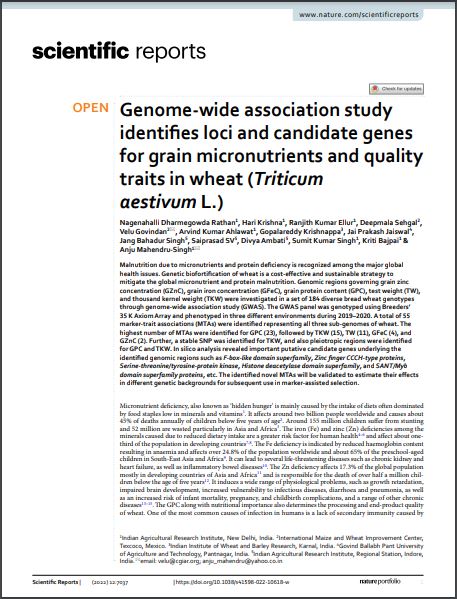Malnutrition due to micronutrients and protein deficiency is recognized among the major global health issues. Genetic biofortification of wheat is a cost-effective and sustainable strategy to mitigate the global micronutrient and protein malnutrition. Genomic regions governing grain zinc concentration (GZnC), grain iron concentration (GFeC), grain protein content (GPC), test weight (TW), and thousand kernel weight (TKW) were investigated in a set of 184 diverse bread wheat genotypes through genome-wide association study (GWAS). The GWAS panel was genotyped using Breeders’ 35 K Axiom Array and phenotyped in three different environments during 2019–2020. A total of 55 marker-trait associations (MTAs) were identified representing all three sub-genomes of wheat. The highest number of MTAs were identified for GPC (23), followed by TKW (15), TW (11), GFeC (4), and GZnC (2). Further, a stable SNP was identified for TKW, and also pleiotropic regions were identified for GPC and TKW. In silico analysis revealed important putative candidate genes underlying the identified genomic regions such as F-box-like domain superfamily, Zinc finger CCCH-type proteins, Serine-threonine/tyrosine-protein kinase, Histone deacetylase domain superfamily, and SANT/Myb domain superfamily proteins, etc. The identified novel MTAs will be validated to estimate their effects in different genetic backgrounds for subsequent use in marker-assisted selection.

